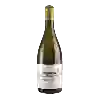
Winery Morey St DenisMeursault Le Limozin Druid Wines
This wine generally goes well with poultry, beef or veal.
Food and wine pairings with Meursault Le Limozin Druid Wines
Pairings that work perfectly with Meursault Le Limozin Druid Wines
Original food and wine pairings with Meursault Le Limozin Druid Wines
The Meursault Le Limozin Druid Wines of Winery Morey St Denis matches generally quite well with dishes of pasta, rich fish (salmon, tuna etc) or shellfish such as recipes of capellini with prosciutto, sea bass wrapped in salt crust or cataplana with seafood.
Details and technical informations about Winery Morey St Denis's Meursault Le Limozin Druid Wines.
Discover the grape variety: Bogazkere
A very old indigenous grape variety grown in Turkey (Anatolia, etc.), most often at high altitudes. Virtually unknown in France and in almost all other wine-producing countries, although attempts have been made in Australia. It is thought to be related to the morek, another Turkish variety.
Informations about the Winery Morey St Denis
The Winery Morey St Denis is one of of the world's greatest estates. It offers 2 wines for sale in the of Meursault to come and discover on site or to buy online.
The wine region of Meursault
The wine region of Meursault is located in the region of Côte de Beaune of Burgundy of France. Wineries and vineyards like the Domaine Coche-Dury or the Domaine d'Auvenay (Lalou Bize Leroy) produce mainly wines white and red. The most planted grape varieties in the region of Meursault are Chardonnay et Pinot noir, they are then used in wines in blends or as a single variety. On the nose of Meursault often reveals types of flavors of pineapple, banana or toasted almonds and sometimes also flavors of baked apple, elderflower or orange.
The wine region of Burgundy
Bourgogne is the catch-all regional appellation title of the Burgundy wine region in eastern France ("Bourgogne" is the French name for Burgundy). Burgundy has a Complex and comprehensive appellation system; counting Premier Cru and Grand Cru titles, the region has over 700 appellation titles for its wines. Thus, Burgundy wines often come from one Vineyard (or several separate vineyards) without an appellation title specific to the region, Village or even vineyard. A standard Burgundy wine may be made from grapes grown in one or more of Burgundy's 300 communes.
The word of the wine: Phenolic ripeness
A distinction is made between the ripeness of sugars and acids and the ripeness of tannins and other compounds such as anthocyanins and tannins, which will bring structure and colour. Grapes can be measured at 13° potential without having reached this phenolic maturity. Vinified at this stage, they will give hard, astringent wines, without charm.










